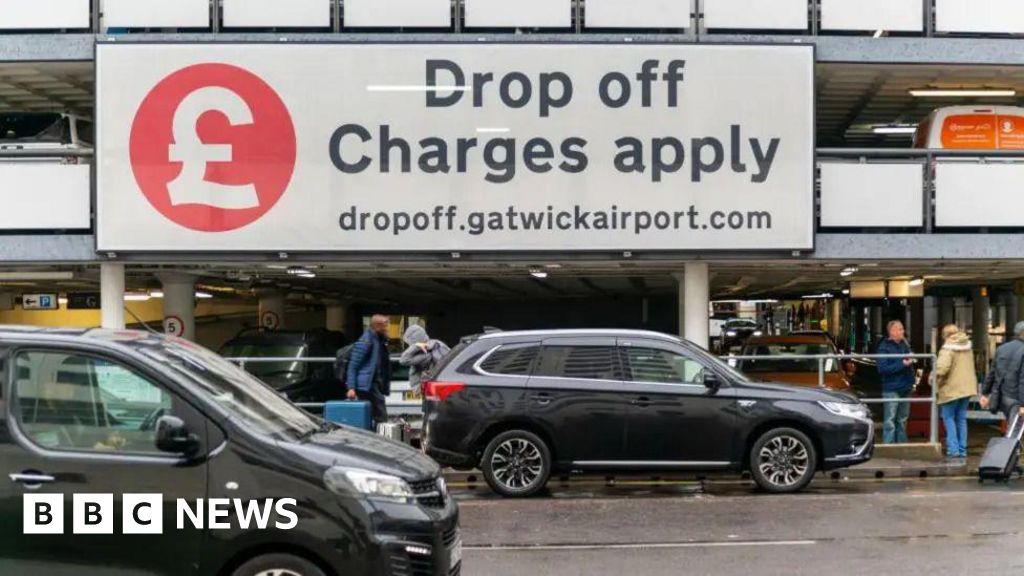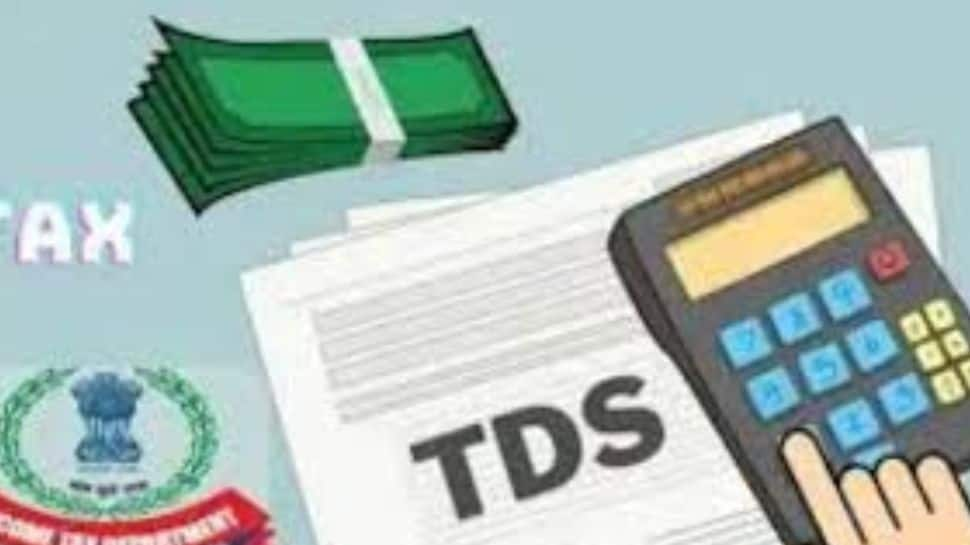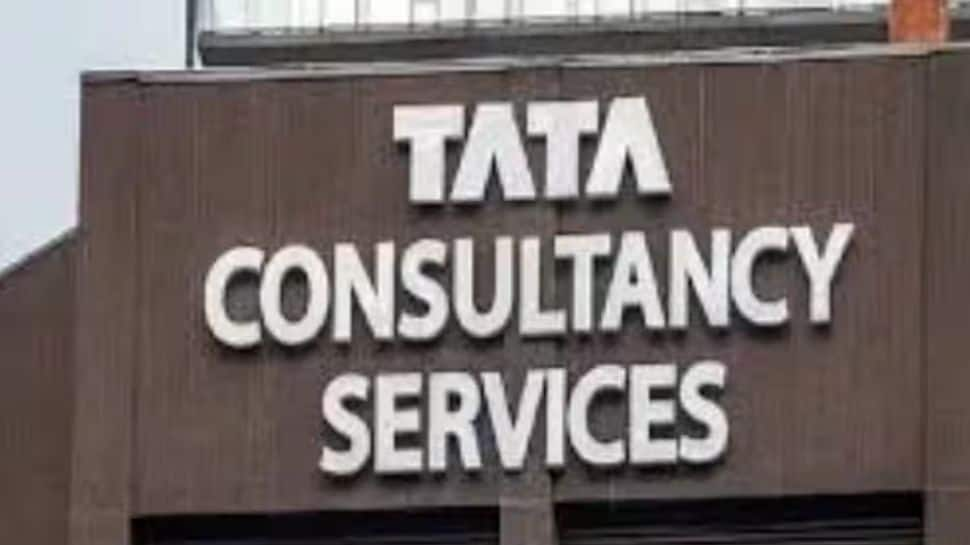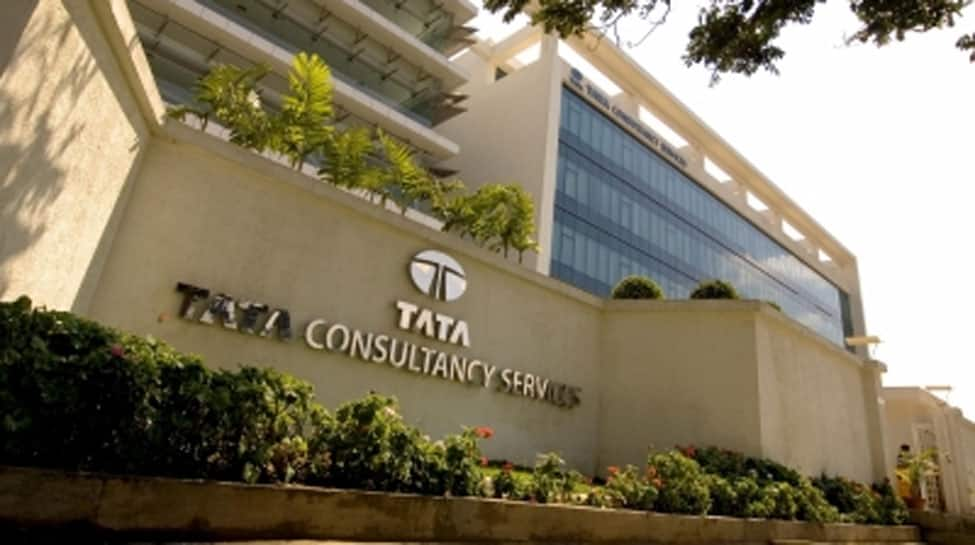Business
Big revival of campus hiring! Infosys invites senior employees on panels for interviews in colleges; details here – The Times of India

Infosys, India’s second largest IT services firm, is gearing up to recruit employees through campus hiring. Infosys has asked its senior staff members to participate in panel interviews at universities for recruitment purposes, marking a revival in campus hiring after two years.Major IT companies, including Tata Consultancy Services, Infosys and Wipro, had reduced both campus and lateral recruitment since Covid due to business deceleration. Infosys reported a significant reduction in fresher recruitment, hiring only 11,900 in FY24, down from 50,000 in the previous year.In FY25, the figure increased to 15,000, with the Bengaluru-based IT firm maintaining its fresher recruitment target of 15,000-20,000 through combined off and on-campus initiatives for the fiscal year ending March 2026.
Infosys campus hiring
These staff members will travel to educational institutions nationwide to recruit digital specialist engineers (DSE), sources familiar with the matter informed ET.For the first time, Infosys has sent a mass email communication to employees at managerial levels and above. According to the email quoted in the report, the Infosys representatives will evaluate candidates’ fundamental programming abilities and problem-solving capabilities required for entry-level DSE positions.Employees at job-level five (JL5) or higher positions who have served the company for at least one year and achieved a minimum performance rating of ‘met expectations’ are eligible to volunteer for these interview panels. The selected panellists will conduct face-to-face interviews at various campuses for positions across the company’s development centres in India.

Freshers hiring in IT sector
According to a source, the emails to senior staff indicated Infosys’s commitment to interviewing numerous students during the upcoming campus recruitment period, scheduled between October and November end. The organisation had previously conducted virtual interviews during the Covid pandemic.The fresh graduate recruitment follows Infosys’s decision to terminate approximately 800 trainees from the 2022 cohort since February, due to their inability to pass internal evaluations.As a component of the current campus recruitment strategy, Infosys plans to organise on-site evaluation processes including aptitude assessment, group interaction, technical interview, managerial discussion and HR consultation. The initial four stages will be conducted at various tier-2 and -3 engineering institutions. Students from diverse disciplines including electrical, electronics, telecom, computer science, information technology, civil and mechanical will participate in this process.“In reputed colleges, we will get up to 1,000 students from all branches. We interview students in the seventh semester as those found fit will have to head for training at the global education centre at Mysuru campus after the eighth semester,” a person familiar with the process was quoted as saying.These positions are designated for freshers who join as trainees. Their permanent employment status depends on successfully finishing the training programme at Mysuru.In June, Infosys implemented an incentive scheme for senior staff members, providing monetary benefits for conducting lateral recruitment interviews.
TCS has campus hiring plans too
Despite TCS announcing layoffs of over 2% (approximately 12,000) at senior and mid-level positions, the Tata Group enterprise and three other leading IT companies collectively aim to recruit more than 70,000 graduates in FY26, suggesting improved employment prospects for new graduates, the ET report said.Campus recruitment continues whilst the $283 billion IT outsourcing sector experiences AI-driven transformation. Organisations are prioritising AI-native and specialised competencies for new appointments whilst focusing on reskilling and upskilling their current workforce.
Business
Shrinking economy takes toll on FTSE 100 amid ‘unsurprising surprise’

The FTSE 100’s early promise faded on Friday amid downbeat economic growth figures and fresh US tech weakness.
The FTSE 100 index closed down 54.1 points, 0.6%, at 9,649.03.
It had earlier traded as high as 9,761.47.
The FTSE 250 ended 24.45 points higher, 0.1%, at 21,876.55, and the AIM All-Share ended up 3.70 points, 0.5%, at 751.36.
For the week, the FTSE 100 fell 0.2%, the FTSE 250 declined 0.9% and the AIM All-Share dropped 0.2%.
The mood was knocked by news that the UK economy shrank in October, according to figures from the Office for National Statistics.
Gross domestic product is estimated to have fallen by 0.1% in October, the same as in September, missing the FXStreet-cited market consensus for a 0.1% rise.
Services output fell by 0.3%, while construction output fell by 0.6%.
Production output, however, climbed 1.1%.
Citi analyst Callum McLaren-Stewart called the data “an unsurprising surprise”.
“A miss in October is perhaps not the most surprising outcome.
“Pre-budget uncertainty, and particularly the degree of speculation ahead of the event, can likely explain the miss relative to forecasts,” he said.
“For households, the prospect of income tax increases (which was still very much live during October) would likely have put the brakes on consumer spending,” the Citi analyst said, while, on the business side, “the associated lack of clarity around which sectors were to be taxed, will have likely delayed/slowed investment decisions”.
Berenberg analyst Andrew Wishart fears some of the slowdown in the UK economy could be due to underlying issues and not just budget uncertainty.
“We suspect that deteriorating fundamentals rather than a budget-related setback in confidence are to blame, so a recovery seems unlikely in the near term,” Mr Wishart said.
The data was seen as cementing a quarter-point interest rate cut at next week’s Bank of England Monetary Policy Committee meeting.
“Not that it was in any doubt at all, but today’s data essentially guarantees that the Bank of England will slash rates again next week.
“The focus will instead be on the guidance for rates in 2026.
“Any dovish undertones that hint at further easing ahead could bode ill for the pound,” Ebury analyst Matthew Ryan said.
Mr McLaren-Stewart agrees the data “clearly supports the consensus case for a cut”.
“However, we anticipate the (BoE) will be obliged to cut lower than currently priced in 2026, necessitating a terminal rate below 3%, supported by weaker GDP outlook,” he added.
Sterling fell back after the figures, after rallying in recent days.
The pound was quoted lower at 1.3356 US dollars at the time of the London equities close on Friday, compared to 1.3416 US dollars on Thursday.
The euro stood at 1.1739 US dollars, down against 1.1746 US dollars.
Against the yen, the dollar was trading higher at 155.69 yen compared to 155.24.
In Europe on Friday, the CAC 40 in Paris closed down 0.1%, while the DAX 40 in Frankfurt ended 0.5% lower.
Stocks in New York were lower at the time of the London equity close.
The Dow Jones Industrial Average was down 0.7%, the S&P 500 index was 1.4% lower, while the Nasdaq Composite was down 2.1%.
Technology stocks were firmly in the red once more as Broadcom slid 11% after results failed to match lofty expectations, while Oracle fell a further 4.6%.
The yield on the US 10-year Treasury was quoted at 4.19%, stretched from 4.12% on Thursday.
The yield on the US 30-year Treasury was at 4.86%, widened from 4.77%.
Supporting the dollar and pushing yields higher, comments from two officials who voted against the Federal Reserve’s decision to lower interest rates this week.
Chicago Fed President Austan Goolsbee had joined Kansas City Fed President Jeffrey Schmid in pushing to keep rates unchanged instead at the central bank’s two-day policy meeting, which ended on Wednesday.
“I believe we should have waited to get more data, especially about inflation, before lowering rates further,” said Mr Goolsbee in a statement Friday.
In a separate statement, Mr Schmid, who also pushed for no rate cut at the Fed’s October meeting, said: “Right now, I see an economy that is showing momentum and inflation that is too hot, suggesting that policy is not overly restrictive.”
In addition, Federal Reserve Bank of Cleveland President Beth Hammack said she would prefer interest rates to be slightly more restrictive to keep putting pressure on inflation, which is still running too high.
Back in London, InterContinental Hotels Group rose 2.3% as Jefferies upgraded to “buy” from “hold”‘, but Whitbread dropped 2.2% as the broker moved the Premier Inn owner the other way, to “hold” from “buy”.
Elsewhere, 1Spatial soared 45% after agreeing in principle to a proposed £87.1 million offer from VertiGIS, a portfolio company of London-based private equity firm Battery Ventures.
The Cambridge, England-based location master data management software company said the cash bid would value each 1Spatial share at 73 pence.
VertiGIS confirmed that it has completed commercial due diligence, has a clear understanding of the 1Spatial business and requires only limited confirmatory diligence to proceed to making a firm offer.
But Card Factory plummeted 27% after cutting its profit guidance as it said weak high-street retail footfall hurt its UK store sales performance.
The Wakefield, England-based greeting cards, gifts and celebration merchandise retailer said it expects adjusted pretax profit of between £55 million and £60 million for financial 2026, which ends on January 31, if current trading trends persist.
This is lower than the company’s previous guidance, which was for mid-to-high single-digit-percentage growth in adjusted pretax profit from £66.0 million in financial 2025, roughly £70 million.
Card Factory attributed weak consumer confidence to the lower high street footfall, which has persisted into its “most important” trading period.
Brent oil was quoted at 61.30 dollars a barrel at the time of the London equities close on Friday, up from 60.91 late on Thursday.
Gold was quoted at 4,291.08 dollars an ounce on Friday, higher against 4,254.97.
The biggest risers on the FTSE 100 were Burberry, up 54.50 pence at 1272.5p, Ashtead Group, up 128.0p at 5,138.0p, BT Group, up 3.7p at 180.5p, Intercontinental Hotels Group, up 185.0p at 10,235.0p and Fresnillo, up 46.0p at 2,904.0p.
The biggest fallers on the FTSE 100 were St James’s Place, down 49.0p at 1,316.5p, British American Tobacco, down 146.0p at 4,238.0p, Anglo American, down 80.0p at 2,817.0p, Weir, down 80.0p at 2,856.0p and Imperial Brands, down 86.0p at 3,179.0p.
Monday’s economic calendar has CPI figures in Canada.
Later in the week, interest rate decisions are due in Europe, Japan and the UK. In addition, US nonfarm payrolls figures will be released, plus UK and US inflation and retail sales data.
Next week’s UK corporate calendar has delayed full-year results from travel retailer WH Smith and half-year numbers from electricals retailer Currys.
Contributed by Alliance News.
Business
Gatwick Airport’s drop-off fee rises to £10

Gatwick Airport is increasing the price of its drop-off zones by £3, bringing the minimum charge to £10.
The fee to allow drivers to stop outside the terminal for 10 minutes is to increase on 6 January.
The airport said the increase was “not a decision we have taken lightly” and blamed “a number of increasing costs, including a more than doubling of our business rates”.
Rod Dennis, RAC senior policy officer, said: “The words ‘Happy New Year’ are unlikely to be uttered by drivers dropping off friends and family at Gatwick in January.”
He added: “A more than 40% increase in the cost to drop-off is the largest we’ve ever seen and represents a doubling of the fee since it first came in.”
Southend Airport charges £7 for drop-off of up to five minutes, but that increases to £15 for between five and thirty minutes.
A drop-off fee of £5 was introduced at Gatwick in March 2021.
That increased to £6 in 2024, with the cost rising again to £7 in May.
A Gatwick spokesperson said: “This increase in the drop-off charge is not a decision we have taken lightly, however, we are facing a number of increasing costs, including a more than doubling of our business rates.
“The increase in the drop-off charge will support wider efforts to encourage greater use of public transport, helping limit the number of cars and reduce congestion at the entrance to our terminals, alongside funding a number of sustainable transport initiatives.”
They added that passengers can be dropped off without charge in long-stay car parks and catch a free shuttle bus to terminals.
Blue Badge holders remain exempt from the charge.
A government spokesperson said: “Airports are responsible for setting their own parking terms but must follow consumer law and justify their charges.
“We’re delivering a £4.3bn support package to cap business rates bill increases at 30% before other reliefs for the largest properties, including airports.
“Without intervention those would be up to 500%.”
Drop-off fees are also rising at Heathrow from 1 January from £6 to £7.
London City, the UK’s last major airport without a drop-off fee, is to introduce one later this month.
Out of mainland Europe’s biggest 10 airports, only one, Schiphol in Amsterdam, charges to drop-off, according to RAC research.
Business
Homeowners are losing thousands in equity thanks to weakening prices

A tract of new tightly packed homes are viewed along the Boulder City Parkway on January 11, 2022 in Henderson, Nevada.
George Rose | Getty Images
Home values have been losing ground for much of this year, with previously huge annual gains shrinking to nothing. The result is that homeowners are losing equity.
Borrower equity fell 2.1% in the third quarter of this year compared with the same period a year ago, or a collective $373.8 billion, according to a report from Cotality. This comes after years of steep home prices gains and record equity. Even after the drop, homeowners still have an overall collective net equity of $17.1 trillion for homes with a mortgage.
For the average homeowner, the third-quarter equity declines translate to a loss of $13,400. In addition, the number of homes in a negative equity position, meaning they are worth less than the mortgage on them, increased by 21% from a year ago to 1.2 million.
“As the pace of home price growth slows and markets recalibrate from pandemic peaks, we’re seeing a clear shift in equity trends,” said Selma Hepp, chief economist at Cotality. “Negative equity is on the rise, driven in part by affordability challenges that have led many first-time and lower-income buyers to over-leverage through piggyback loans or minimal down payments.”
Those in a negative equity position likely purchased their homes more recently, when mortgage rates were higher and prices had peaked. Homeowners have also been pulling more equity out of their homes, thanks to huge gains in the last five years.
Home values are now roughly 52% higher than they were in January 2020, according to the S&P Cotality Case-Shiller national home price index. Even after mortgage rates increased in 2023, the average equity gain per homeowner was $25,000. In 2024, it was $4,900.
Not every market, however, is seeing the same dynamic. Boston, Chicago and New York City are all still in the positive, according to the Cotality report. The biggest losses were in Los Angeles, San Francisco, Washington, D.C., Miami and Houston, Texas.
“The future performance of highly leveraged loans will hinge on the strength of the U.S. economy and labor market. Even as expectations for continued price appreciation and economic resilience persist, it remains critical to closely monitor these loans in the months ahead,” Hepp said.
-

 Sports1 week ago
Sports1 week agoAustralia take control of second Ashes Test | The Express Tribune
-

 Politics5 days ago
Politics5 days agoThailand launches air strikes against Cambodian military: army
-

 Entertainment1 week ago
Entertainment1 week agoSabrina Carpenter recalls ‘unbelievable’ experience with pal Taylor Swift
-

 Politics6 days ago
Politics6 days ago17 found dead in migrant vessel off Crete: coastguard
-

 Tech1 week ago
Tech1 week agoWIRED Roundup: DOGE Isn’t Dead, Facebook Dating Is Real, and Amazon’s AI Ambitions
-

 Politics1 week ago
Politics1 week agoGen-Z battles to gain political ground after ousting ex-PM Hasina in Bangladesh
-

 Fashion1 week ago
Fashion1 week agoBangladesh’s economic outlook cautiously optimistic: Govt
-

 Fashion5 days ago
Fashion5 days agoGermany’s LuxExperience appoints Francis Belin as new CEO of Mytheresa












